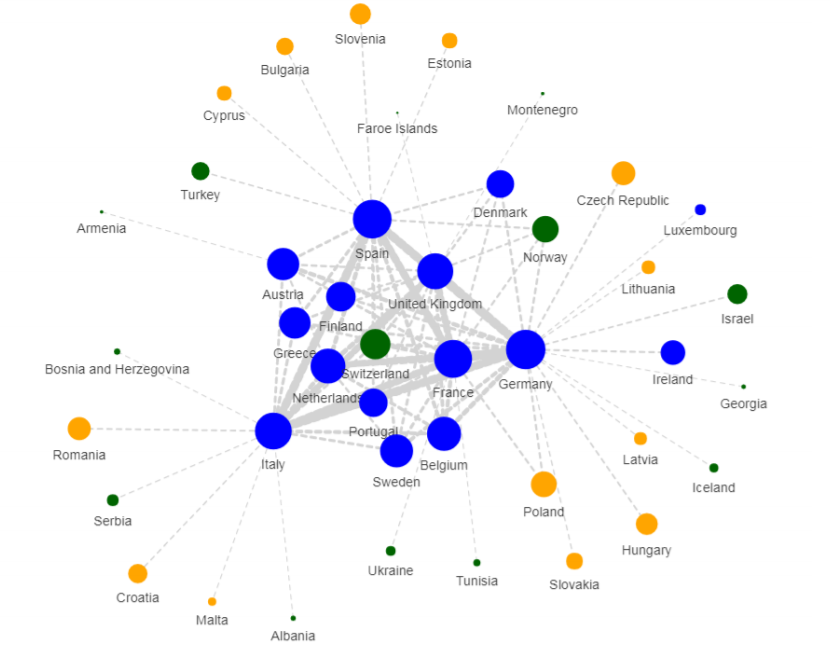
Horizon 2020 is mostly about collaborative research projects: groups of researchers that come together from several organisations, from at least three countries, to perform EU-funded R&D. But clearly, some countries are more important than others when setting up these consortia.
This diagram, from the European Commission, shows the network of collaborations on Horizon 2020 projects. The older, so-called EU-15 countries are represented in blue; newer EU-13 members are represented in orange; and associated countries – non-EU countries that have agreements to participate regularly in Horizon projects - are represented in green. The size of the nodes expresses the importance of a country in the network, while the width of the links expresses the number of collaborations between countries.
The chart shows the most common collaborations include Germany, France, the UK, Italy, and Spain.
But there are some interesting patterns of who regularly works with whom. Case in point: German participants are frequent partners of researchers from newer EU member states, such as Czech Republic, Hungary, Latvia, Lithuania and Slovakia. Meanwhile, Croatia, Malta and Romania present strong ties with Italy, while Bulgaria, Cyprus, Estonia and Slovenia tend to connect with Spanish participants.
Source: European Commission





 A unique international forum for public research organisations and companies to connect their external engagement with strategic interests around their R&D system.
A unique international forum for public research organisations and companies to connect their external engagement with strategic interests around their R&D system.